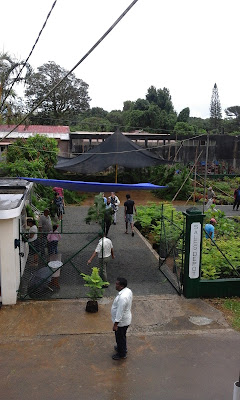1. Purpose of the Code
The Code of Ethics
sets out the standards of correct conduct expected of Public Officers. It emphasizes the importance of a
responsible, responsive and caring Civil Service and is intended to promote
effective administration and responsible behaviour.
2. Values and Principles
The three guiding
principles of the Code are as follows:
1) Public Officers shall fulfill their lawful obligations
to Government with professionalism, integrity and loyalty;
2) Public Officers shall perform their official duties
honestly, faithfully and efficiently while respecting the rights of the public
and their colleagues; and
3) Public Officers shall not bring the Civil Service into
disrepute through their private activities.
Moreover,
to inspire public confidence and trust, this code rests upon a number of core
values, which require that Public Officers behave with:
Integrity - Putting
the obligations of the Civil service above one’s
own personal
interests.
Selflessness - Avoid
seeking personal gain or financial or other material
benefits for
one’s family or friends through one’s official
position.
Impartiality - Acting solely according to the merits
of a case and
serving the
Government of the day, irrespective of one’s
own political
affinity or preference.
Objectivity - Favouring meritocracy and basing
one’s advice and
decisions on
rigorous analysis of evidence.
Accountability - Being
responsible and accountable for one’s decisions
and actions.
Openness - Being as open as possible in one’s
decisions and
providing
justification for one’s actions whenever required.
Honesty - Acting in good faith and being
truthful.
Justice - Adhering to the principles of natural
justice.
3. Personal and Professional Behaviour
Public Officers
have a duty to treat the public and their colleagues with courtesy and
respect. They shall therefore:
·
Not cause embarrassment
to colleagues or members of the public by their dress, speech of behaviour;
·
Not consume alcoholic
beverages while on duty;
·
Not engage in gambling
by any means at the workplace;
·
Not smoke where it is
illegal or where it is likely to inconvenience others;
·
Not cause distress to
their colleagues, or otherwise contribute to disruption of the working
atmosphere in the workplace;
·
Not discriminate
against any person on ground of sex, marital status, colour, race, ethnic or
national origin, disability, political opinion, occupation, status, sexual
orientation, religious or ethical beliefs;
·
Not harass, bully or
otherwise intimidate members of the public or colleagues;
·
Respect the privacy of
individuals;
·
Have due regard for the
safety of the public and colleagues at the workplace.























